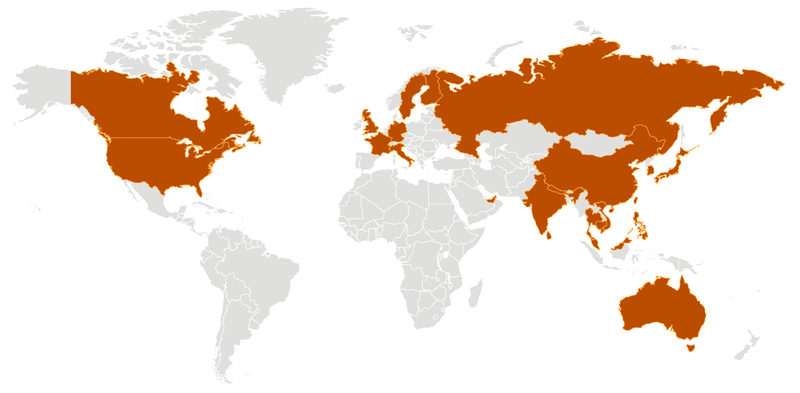
(Updated Feb 06 15:15 PST to reflect current numbers)
The World Health Organization (WHO) declared the outbreak of the Wuhan coronavirus (2019-nCoV) a public health emergency of international concern after its emergency committee convened on January 30, in response to the potential for the virus to spread to other countries, with 26 countries outside of China having already reported confirmed cases of the disease. This special designation—one that has only been used five times in the past decade—has been made in order to help prevent the spread of 2019-nCoV to countries that lack the health care resources necessary to contain and combat the potentially-deadly virus.
The total number of confirmed infections worldwide currently stands at over 28,300, with the vast majority of those cases (28,033, or 99.1 percent) having occurred in mainland China. 565 people have died from the virus—a mortality rate of just a little under 2 percent—making the Wuhan coronavirus only one-fifth as deadly as the SARS coronavirus (SARS-CoV) at the center of the 2002-2003 outbreak that killed 774 people. To date, 1,382 people have recovered from the virus.
The Center for Systems Science and Engineering (CSSE) at Johns Hopkins University has posted a dashboard that tracks the progress of the disease, based on ongoing updates from health authorities such as the CDC and WHO.
Although 2019-nCoV appears to be roughly as virulent as the SARS coronavirus, health officials are still working to understand the full nature of the disease and the virus that causes it. While a respiratory virus such as 2019-nCoV can travel through the air, it can only do so for a few feet, when the tiny droplets that are either sneezed or coughed up by an infected person fall to the ground. This makes the Wuhan coronavirus harder to contract than other pathogens like measles, chickenpox and tuberculosis, which can travel a hundred feet through the air. Officials estimate that an individual infected with 2019-nCoV can infect between 1.5 and 3.5 people, provided that no preventative measures are taken. For comparison, someone with the seasonal flu can infect an average of roughly 1.3 other people.
On February 2, a man in the Philippines became the first person to have died from the disease outside of mainland China; up until that point all of the fatalities that had occurred had been within China’s borders. The patient was a 44-year-old man from Wuhan who had become infected in China before arriving in the Philippines, and had been admitted to a hospital in Manila with severe pneumonia. According to health officials, the patient was “stable and showed signs of improvement”, but his condition deteriorated rapidly in the last 24 hours before his death; it is also suspected that he had pre-existing health issues that complicated his condition. A 38-year-old woman he had been traveling with has also tested positive for the disease, and is currently being treated in Manila.
On February 3 a 39-year-old man from Hong Kong became the second individual to succumb to the disease. He had returned from a trip to Wuhan when he was admitted to hospital. According to health officials, this individual had diabetes, which can impair the immune system. Between this individual and the death of the man in the Philippines, only two fatalities have occurred outside of mainland China, meaning that out of the 265 cases that have been reported outside of China, the mortality rate for this virus is only 0.75 percent.
There is a possibility that both cases of infection and deaths from the virus are being under-reported in China, as the cities at the center of the outbreak are facing a shortage of testing kits and hospital beds; additionally, many people have not been able to travel into the cities for treatment, due to the strict travel restrictions imposed on the region.
Although the Wuhan coronavirus isn’t necessarily dangerous to the average individual, its potential infection rate has the potential to cause thousands of deaths in those susceptible to the effects of the virus—specifically, older people, and people with pre-existing medical conditions such as asthma, diabetes, and heart disease. Regardless, the WHO advises people of all ages to take steps to avoid contracting 2019-nCoV, for example by frequent hand-washing and good respiratory hygiene.
Subscribers, to watch the subscriber version of the video, first log in then click on Dreamland Subscriber-Only Video Podcast link.